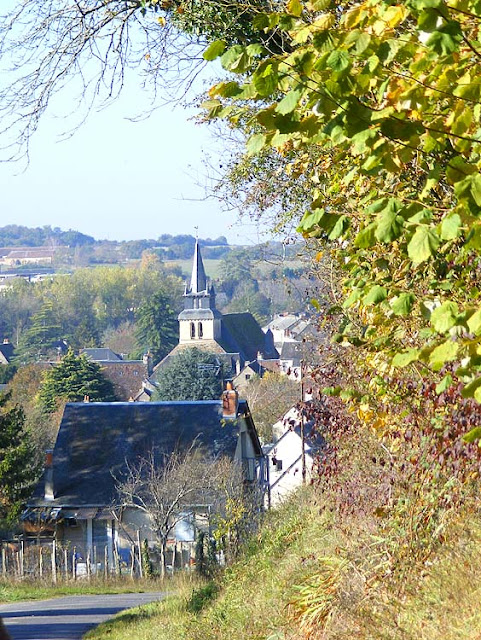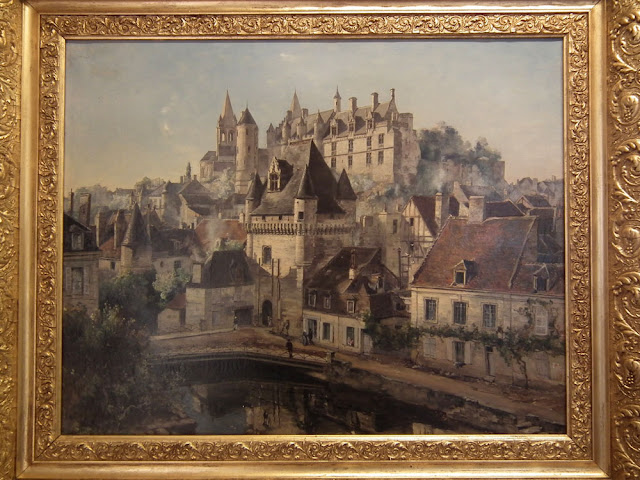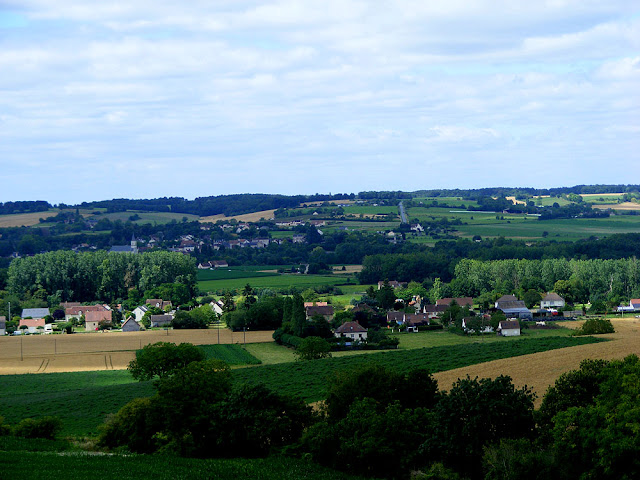The local archives have been digging out documents that give us a glimpse of what it was like here in previous epidemics. I thought I'd pass on some of the stories.
Five hundred years ago Loches was hit by plague, and the attempts to contain it were sometimes not so different from today.
 |
| View of Loches. |
Omicron might have messed up many people's Christmas this year, but it was nothing compared to 1487 when in Loches the plague claimed 800 people (between a third and a quarter of the population) between Saint John's Day (23 June) and Christmas, and 19 people were buried in Vignemont cemetery on a single day.
 |
| View of Le Grand Pressigny. |
In the spring of 1518 one contemporary report says that at first the next outbreak of plague at Loches seemed confined to outside the town gates, but by the summer it had appeared in the town and raged for several months. Guards were employed to man the Porte des Cordeliers 'for fear that those from Beaulieu would enter Loches, there is a danger of plague that is going on in Beaulieu'. On the other hand, the authorities also organised a procession through the town, from Saint Ours church, which may not have been the most effective response to the situation.
 |
| View of the Royal Citadel in Loches by Lansyer (19C). |
Reading the accounting records gives an idea of the measures taken 500 years ago. First, quarantine, the only measure known to be effective, so long as no one in quarantine had already caught it. The inhabitants of Beaulieu, where the plague was raging, were prevented by force from going to Loches. The sick were gathered in a paper mill outside the town. Someone was paid to transport and bury the dead, partly to prevent the spread of the disease via the corpses. A barber-surgeon was paid for dressing the wounds of the sick and looking after them. A receipt from 1524 shows that drugs and medicines were purchased from an apothecary in 1522. The accounts also attest to the purchase of food for the sick.
 |
| The old centre of Tours (Place Plumereau). |
In 1583 the diary of a nun at Beaumont Abbey mentions that there is plague in Tours and that a council of Bishops in the city had to be cancelled in May because of it. She mentions it again in October as the epidemic progresses. The authorities were doing their best to deal with the bodies in order to limit the spread of the disease. Fires were lit in the city to purge the air. A tax was raised on the whole population in order to fund buying food for the poor. Itinerate peddlars were banned and there was considerable concern about the number of poor people coming into the city seeking food. They were not welcome as it was perceived that they spread disease and strained the municipal funds.
 |
| View of Barrou. |
In October 1632 symptoms of the plague broke out in the eight members of the Delétang family in Barrou. Measures were taken immediately to isolate these unfortunate people. They were relegated to a hut that was hastily built on a vacant piece of land. Crowded into this tiny hut, left to themselves and deprived of care, the father Jean, his son and two daughters soon died. The mother carried their corpses out of the hut, dug a pit in front of the door and deposited her husband and her three children there. The horror did not stop there: the next day, the mother and two more of the children died. The hut was silent and still, so the villagers assumed everyone was dead and they hurried to set it on fire. However, Martin, a toddler of about two years old, was still breathing. He was taken out of the fire alive and entrusted to one of the inhabitants of Barrou, who agreed to take him in. But he only survived his parents for a short time and twelve days later also died of the plague.
The plague killed 78 people from July to November 1634 in Le Grand Pressigny. Entire families disappeared, one by one. There weren't enough villagers able to carry the dead to the cemetery; they were buried in front of their homes, in their gardens or in the fields, by family members, or most often by mercenaries who took the victim's furniture in payment. The records give an account of one of these mercenaries, who buried a couple in a pit in front of their house. He then took all their furniture and money (about €1300 of cash in modern terms). He didn't profit for long, as he himself was dead within ten days time.
At the end of July 1634, a charitable organisation appeared called Les Freres de la Mort ("the Brothers of Death"). It was they who took charge of the mercenary who had buried the couple and taken all their belongings. But he had been dead ten days before they were able to get to him. This delay shows how difficult it was to find bearers.
Recurrences of the plague occurred right up until the middle of the 18th century.

3 comments:
You’re right! Quelle horreur!
I think it was not until around 1900 that the discovery was made that it was the fleas who were the vectors. When I lived in New Mexico it was endemic, although treatable people sometimes died. The prairie dogs hosted the fleas.
bonnie in provence
bonnie groves poppe: yes there are periodic outbreaks all over the place.
Post a Comment